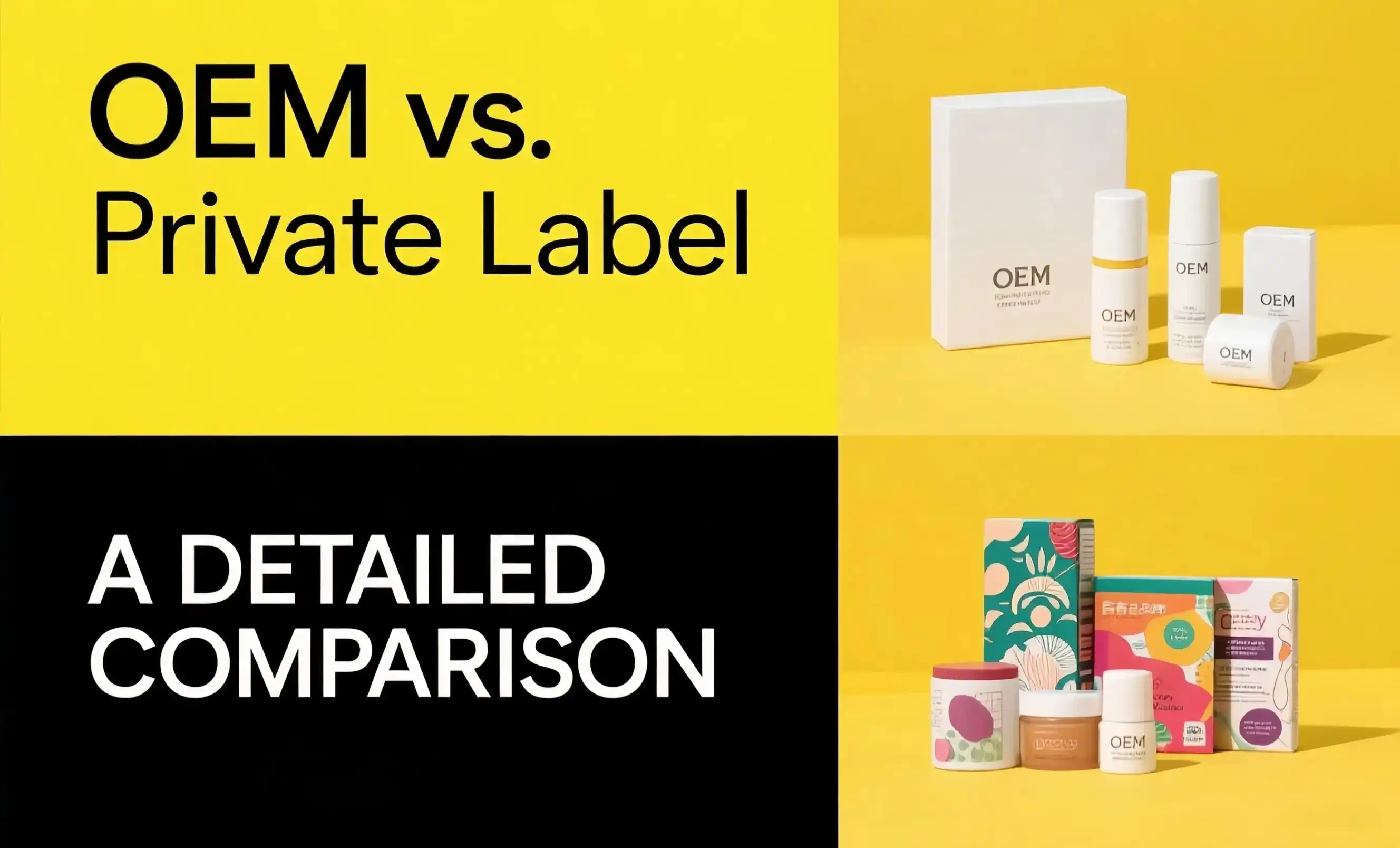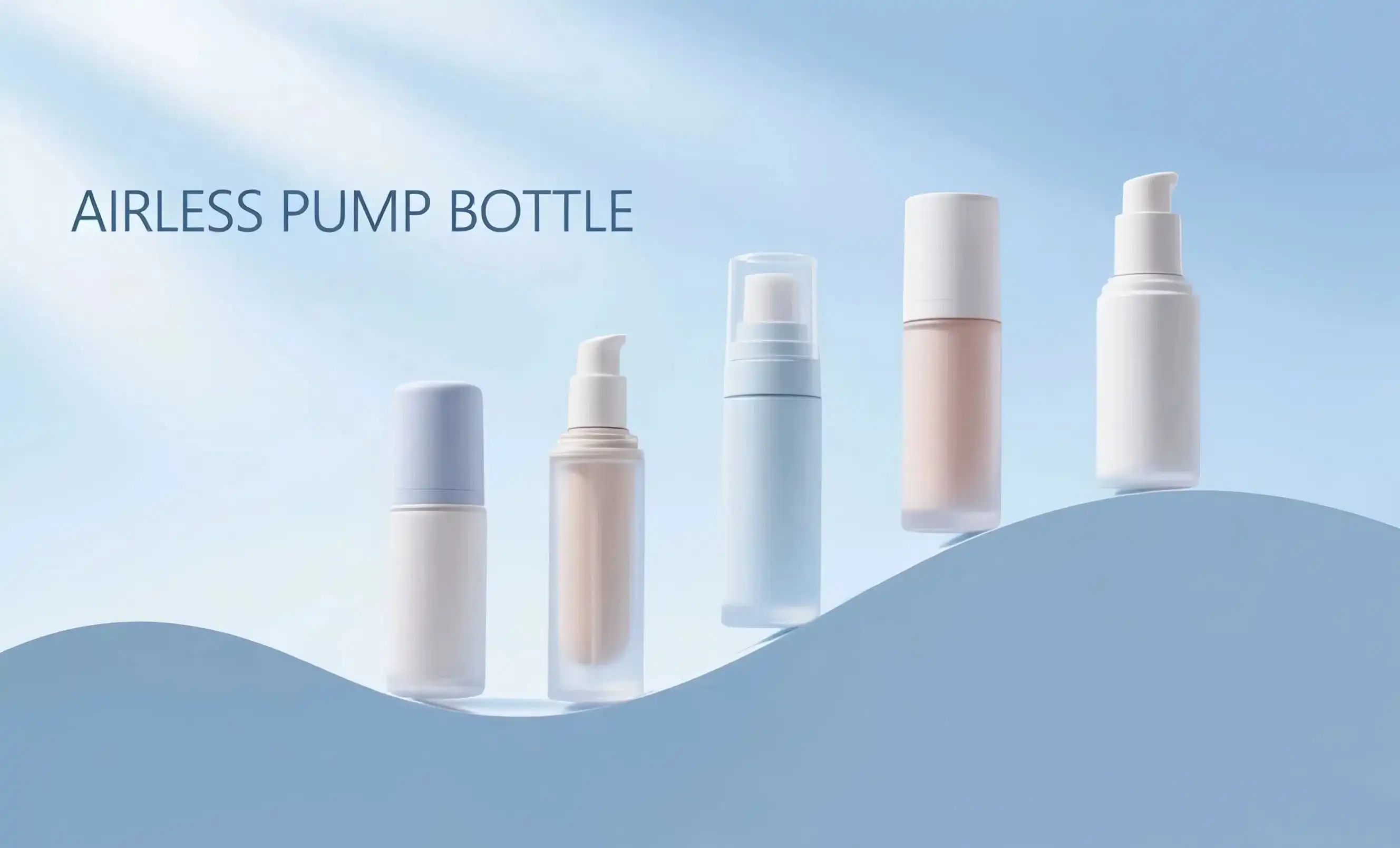Key differences between OEM and private label packaging explained
Understanding the fundamental differences between OEM cosmetic packaging and private label options is essential for making the right choice for your beauty brand. Let's break down the key distinctions:
Customization and Uniqueness
OEM packaging offers a high degree of customization, allowing brands to create unique, standout designs that reflect their identity. This level of personalization extends to materials, shapes, colors, and functionalities. For instance, Topfeelpack's advanced airless bottles can be tailored to prevent air exposure, maintaining product effectiveness and ensuring longer shelf life. Private label packaging, while more limited in customization options, often provides a range of pre-designed solutions that can be quickly adapted with your branding.
Time-to-Market
Private label solutions typically offer a faster route to market, as the packaging designs are already developed and ready for branding. This can be particularly advantageous for brands looking to launch quickly or test new product lines. OEM packaging, while offering greater customization, may require a longer development process. However, companies like Topfeelpack have streamlined their processes to deliver new products to customers in 30-45 days, significantly reducing the traditional OEM timeline.
Minimum Order Quantities (MOQs)
OEM packaging often comes with higher minimum order quantities due to the custom nature of the production. This can be a consideration for smaller brands or those testing new products. Private label options typically offer more flexibility with lower MOQs, making them accessible to a wider range of businesses. However, some OEM manufacturers are now offering more flexible options to accommodate varying business needs.
Brand Differentiation
OEM packaging provides the opportunity for significant brand differentiation, allowing companies to create packaging that stands out on the shelf and aligns perfectly with their brand image. Private label options, while more limited, can still be effective for brands focusing on product quality rather than unique packaging as their primary differentiator.
Which is better for startups: OEM or private label cosmetics?
Choosing between OEM and private label cosmetics is a critical decision for startups in the beauty industry. Each option has its merits, and the best choice depends on various factors specific to your business model, target market, and long-term goals.
Advantages of OEM for Startups
OEM cosmetic packaging offers startups the opportunity to create a unique brand identity from the outset. This can be particularly valuable in crowded markets where standing out is crucial. With OEM, startups can:
- Develop custom formulations that align with their brand values and target audience needs
- Create distinctive packaging designs that capture attention and reinforce brand identity
- Build a strong foundation for long-term brand recognition and loyalty
For startups with a clear vision and unique selling proposition, OEM allows for the creation of products that truly embody their brand essence. Companies like Topfeelpack offer fast customization options, delivering new products in 30-45 days, which can significantly reduce the traditional time-to-market for OEM products.
Benefits of Private Label for Startups
Private label cosmetics can offer several advantages for startups, particularly those with limited initial capital or those looking to test the market quickly:
- Lower upfront costs and minimum order quantities
- Faster time-to-market, allowing for quick product launches
- Reduced complexity in product development and manufacturing
- Opportunity to focus on marketing and sales rather than product development
Private label options can be an excellent way for startups to enter the market, build an initial customer base, and generate revenue while planning for future custom product lines.
Making the Decision
When deciding between OEM and private label, startups should consider:
- Available budget and resources
- Target market and competitive landscape
- Long-term brand strategy and growth plans
- Time constraints for market entry
Some startups may find a hybrid approach beneficial, launching with private label products while simultaneously developing OEM lines for future release. This strategy allows for immediate market presence while working towards a more distinctive brand offering.
Cost comparison: OEM manufacturing vs. private label branding
Understanding the cost implications of OEM manufacturing versus private label branding is crucial for businesses in the cosmetics industry. While initial perceptions might suggest that private label is always the more cost-effective option, the reality is more nuanced and depends on various factors.
Initial Investment
Private label generally requires a lower initial investment compared to OEM manufacturing. With private label, you're essentially purchasing ready-made products and adding your branding, which typically involves lower minimum order quantities and reduced upfront costs. OEM manufacturing, on the other hand, often requires a higher initial investment due to custom formulation, packaging design, and production setup costs. However, companies like Topfeelpack offer competitive pricing and flexible minimum order quantities, making OEM more accessible to a broader range of businesses.
Long-term Cost Efficiency
While OEM manufacturing may have higher upfront costs, it can be more cost-effective in the long run, especially for brands aiming for significant growth. As production volumes increase, the per-unit cost of OEM products often decreases more substantially than private label options. Additionally, the ability to fine-tune formulations and packaging can lead to optimized production processes and reduced waste, further improving cost efficiency over time.
Value-Added Costs
When comparing costs, it's important to consider the value-added aspects of OEM manufacturing. Custom packaging and formulations can command higher prices in the market, potentially leading to better profit margins. The unique attributes of OEM cosmetic packaging, such as Topfeelpack's advanced airless bottles that prevent air exposure and extend product shelf life, can justify premium pricing and enhance brand value.
Hidden Costs and Considerations
Both OEM and private label options may have hidden costs that should be factored into the decision-making process:
- Regulatory compliance and testing costs
- Inventory management and storage expenses
- Marketing and branding investments
- Potential reformulation or repackaging costs for private label products to align with changing market trends
OEM manufacturing often provides greater control over these aspects, potentially reducing long-term costs associated with product changes or compliance issues.
Balancing Cost and Value
Ultimately, the choice between OEM and private label should balance cost considerations with the overall value proposition for your brand. While private label may offer lower initial costs, OEM manufacturing provides opportunities for differentiation, quality control, and long-term brand building that can justify the investment for many businesses.
Considering factors such as target market, growth projections, and brand positioning is crucial in making this decision. Some companies find success in a hybrid approach, using private label products to enter the market quickly while developing OEM lines for long-term growth and brand establishment.
Conclusion
Choosing between OEM cosmetic packaging and private label options is a significant decision that can shape the future of your beauty brand. While private label offers quick market entry and lower initial costs, OEM manufacturing provides unparalleled opportunities for customization, brand differentiation, and long-term value creation. The right choice depends on your specific business goals, resources, and market positioning strategy.
For brands looking to create truly unique and high-quality cosmetic packaging solutions, Topfeelpack offers a compelling OEM option. Our advanced airless bottles are designed to meet the highest standards of product protection and sustainability, while our fast customization process ensures your products reach the market quickly. With competitive pricing, fast delivery within 3-5 weeks, and custom solutions tailored to your needs, we're equipped to support beauty brands of all sizes in bringing their vision to life.
Whether you're a startup looking to make a splash in the market or an established brand seeking to refresh your product line, we invite you to explore how our OEM cosmetic packaging solutions can elevate your brand. Contact us at pack@topfeelgroup.com to learn more about our cosmetic airless bottles and how we can help bring your packaging vision to reality. Let's create beauty packaging that not only protects your product but also enhances your brand's presence in the competitive cosmetics market.
References
- Smith, J. (2023). The Evolution of Cosmetic Packaging: OEM vs. Private Label Trends. Journal of Cosmetic Science, 45(2), 112-128.
- Johnson, A. & Brown, L. (2022). Cost-Benefit Analysis of Custom Packaging in the Beauty Industry. International Journal of Packaging Technology, 18(4), 205-220.
- Chen, Y. (2023). Sustainability in Cosmetic Packaging: A Comparative Study of OEM and Private Label Solutions. Environmental Science & Technology, 57(9), 4521-4535.
- Williams, R. (2022). Market Entry Strategies for Cosmetic Startups: OEM vs. Private Label Approaches. Journal of Business Strategy, 33(1), 78-93.
- Lee, S. & Park, H. (2023). Innovation in Cosmetic Packaging: The Role of OEM Manufacturers in Product Development. Journal of Product Innovation Management, 40(3), 321-337.
- Garcia, M. (2022). Brand Differentiation Through Packaging: A Study of OEM Cosmetic Containers. Journal of Brand Management, 29(6), 712-728.
This article has been reposted from "OEM Cosmetic Packaging vs. Private Label: What’s the Difference"
For the original link, please visit: https://www.ecoairlessbottles.com/news/oem-cosmetic-packaging-vs-private-label-what-s-the-difference/
If there are any copyright concerns, please contact us for prompt removal.


 - 副本_1745399213966.webp)

_1747827716538.webp)

